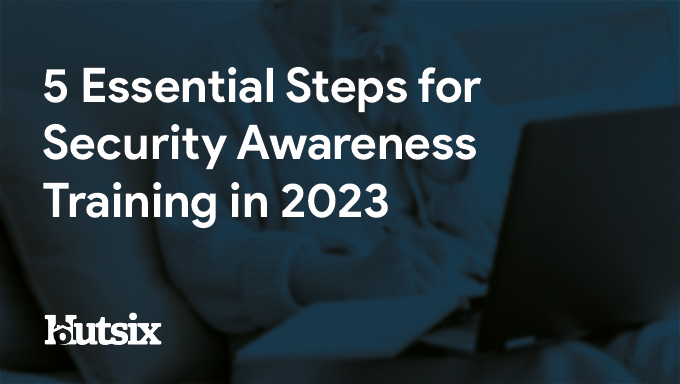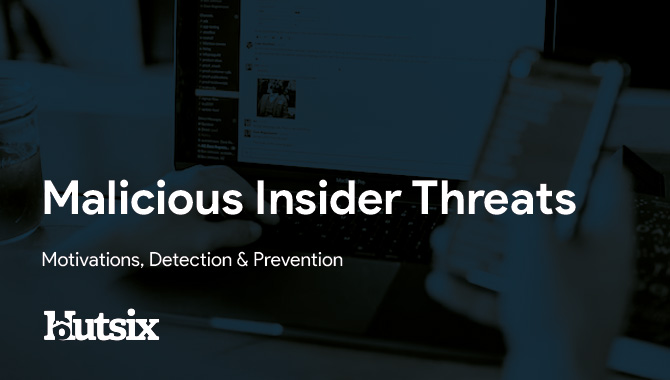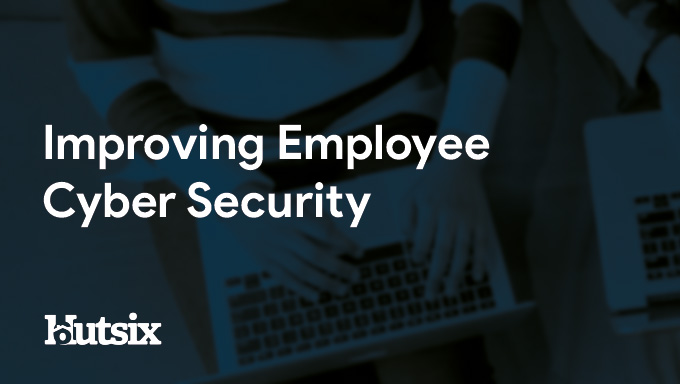Understanding Security Awareness Training
In today's digital landscape, where cybersecurity threats loom large, understanding security awareness training is paramount. This article delves into the essence of security awareness training and why it is crucial for employees.
By the end of this comprehensive guide, you'll not only grasp the importance of this training but also discover practical ways to enhance security awareness within your organisation.
Looking to better understand your information security?
Talk to one of our experts about effective training now.
What is Security Awareness Training?
Security awareness training is an educational initiative designed to empower individuals with the knowledge and skills needed to recognise, respond to, and mitigate cybersecurity threats. It equips employees with the understanding of various cyber threats and how their actions can impact an organisation's security.
This training encompasses a wide range of topics, including but not limited to phishing, web safety, password management, malware prevention, and handling sensitive information.
Looking to learn more about security training for UK employees? Check out our blog here!
Why is Security Awareness Training Essential for Employees?
Security awareness training is essential because employees are often the first line of defence against cyber threats, and as various cyber threats are becoming increasingly sophisticated, human error is a significant contributor to security breaches.
Without proper training, employees can unintentionally compromise an organisation's security. By providing security awareness training, organisations can educate their staff about the potential risks and best practices for mitigating them, ultimately reducing the likelihood of security incidents.
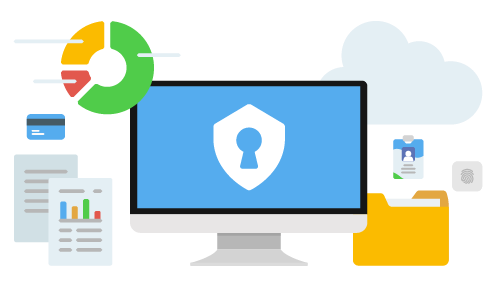
Simulated Phishing Tests to Increase Security Awareness
One effective method for increasing security awareness is through simulated phishing tests. These tests involve sending fake phishing emails to employees to assess their ability to identify and respond to phishing attempts.
This hands-on approach not only helps employees recognise common phishing tactics but also provides a safe environment for learning. It's a proactive way to prepare your staff for real-world threats and cultivate a vigilant security culture within your organisation.
Find out more about Simulated Phishing Campaigns
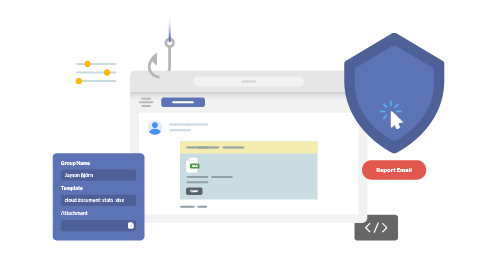
Interactive Security Awareness Training
Interactive online learning plays a pivotal role in enhancing security awareness among employees. Unlike traditional, passive training methods, interactive courses engage learners through various activities, quizzes, and simulations.
This approach not only makes the training more enjoyable but also ensures that employees retain and apply the knowledge effectively. By choosing interactive online security awareness training, organisations can make the learning experience more dynamic and tailored to their specific needs.
Why Choose Hut Six Security Awareness Training?
When it comes to selecting a provider for security awareness training, quality and effectiveness are paramount. Hut Six offers a comprehensive cyber security awareness course designed to equip your employees with the knowledge and skills necessary to safeguard your organisation.
With a focus on detailed tutorials and an engaging, universally understood tone, Hut Six's training is tailored to deliver real results.
Our course features twenty-six tutorials covering all aspects of information and cyber security, constantly updated with the latest best practices and case studies.
These interactive tutorials allow users to put their education into practice, ensuring a continued learning experience. Moreover, the cloud-based, online tutorials are designed to be completed in just ten minutes or less, covering threats commonly faced in the workplace.

Essential Security Awareness Training Topics
- Phishing: Phishing is a deceptive tactic cybercriminals use to trick individuals into revealing sensitive information, such as passwords and financial data. Training in this area focuses on recognising phishing attempts, understanding the red flags, and responding appropriately.
- Web Safety: Web safety training teaches employees how to browse the internet securely. This includes identifying and avoiding potentially harmful websites, recognising signs of online threats, and understanding best practices for safe online navigation.
- Passwords: Passwords are the keys to digital security. Training in this area covers the importance of creating strong, unique passwords, how to securely manage them, and the risks associated with password reuse.
- Malware: Malware, short for malicious software, poses a significant threat to data security. Training on malware helps employees recognise different types of malware, understand how it can infect systems, and adopt measures to prevent malware infections.
- Mobile Devices: Mobile devices are a common target for cyberattacks. Training in this topic ensures employees understand the risks associated with mobile device use, secure their smartphones and tablets, and follow best practices for mobile security.
- Wi-Fi: Wi-Fi networks are vulnerable entry points for cyberattacks. Wi-Fi security training equips employees with knowledge on how to securely connect to wireless networks, recognise insecure connections, and protect sensitive data while using public Wi-Fi.
- Social Engineering: Social engineering tactics involve manipulating individuals to reveal confidential information or perform actions that compromise security. Training focuses on identifying and responding to social engineering attempts, such as phishing calls and impersonation.
- Encryption: Encryption is a fundamental aspect of data protection. Training in encryption covers the basics of encrypting data, understanding its importance in safeguarding sensitive information, and implementing encryption best practices.
- Backups: Regular data backups are essential for data recovery in case of a cyber incident. Training teaches employees the significance of backups, how to perform them, and the role they play in minimising data loss.
- Handling Sensitive Information: Proper procedures for handling sensitive information are crucial. Training emphasises how to identify sensitive data, securely store and transmit it, and comply with data protection regulations to prevent data breaches.
[Find out more about Simulated Phishing Campaigns](https://www.hutsix.Read more: 15 Essential Cyber Awareness Training Topics for 2024io/simulated-phishing)
What are the 4 Types of Security Training?
Security training comes in various forms, catering to different aspects of cybersecurity preparedness:
- Basic Security Awareness Training: This fundamental training equips employees with essential knowledge about recognising common threats and practicing safe online behaviour.
- Technical Security Training: This training focuses on the technical aspects of cybersecurity, delving into topics like network security, system administration, and threat mitigation.
- Security Management Training: Geared towards managers and decision-makers, this training explores strategies for effective security program management, policy development, and risk assessment.
- Compliance Training: Compliance training ensures that employees understand and adhere to relevant industry regulations and data protection laws, minimising legal and regulatory risks.
How do you Develop Security Awareness Training?
Implementing an effective Cyber Security Awareness Training Program involves several key steps:
- Get Buy-in From Company Leadership: Gain support from top management to allocate resources and emphasise the importance of security training.
- Perform Risk Assessment Reports: Identify the specific cybersecurity risks your organisation faces to tailor the training program accordingly.
- Provide Interactive Training Courses: Create engaging, interactive content that resonates with your employees, enhancing learning retention.
- Schedule Simulated Phishing Attacks: Conduct simulated phishing attacks to assess employees' readiness and provide hands-on experience in recognising and responding to real threats.
- Compile Test Results and Improve: Analyse test results to identify weak points in your security awareness program, and continuously improve the content and delivery methods.
- Implement and Enforce New Policies: Develop and implement cybersecurity policies and ensure employees understand and adhere to them.
- Retrain Employees Regularly: Cyber threats evolve, so ongoing training is essential to keep employees updated and vigilant.
What is Employee Security Awareness?
Employee security awareness refers to the knowledge and consciousness of cybersecurity risks and best practices that employees possess.
It encompasses the ability to recognise and respond to cyber threats, the understanding of the consequences of their actions on the organisation's security, and the commitment to reduce human cyber risk. The goal is to create a workforce that actively contributes to protecting the organisation from cyber threats.
Read More: 5 Steps to Foster an Effective Information Security Culture
How can we Improve Security Awareness in the Workplace?
To enhance security awareness within the workplace, consider these five essential tips:
- Ensure you have Policies and Procedures in place: Develop clear and comprehensive security policies and procedures that outline acceptable behaviour and guidelines for handling sensitive data.
- Train employees on How to Properly Manage Sensitive Data: Ensure that employees understand how to handle, store, and transmit sensitive data securely.
- Understand Which Security Tools You Actually Need: Evaluate and implement appropriate cybersecurity tools and solutions that align with your organisation's specific needs.
- Prepare Employees to Respond to a Data Breach: Develop an incident response plan and train employees on how to respond to data breaches effectively to minimise damage.
- Know Your Compliance Obligations: Stay informed about relevant industry regulations and compliance mandates and ensure that employees are educated and compliant with these standards. Compliance helps bolster security practices and protects against legal repercussions.
Security Awareness for your Organisation
Enjoyed our blog? Learn more about how Hut Six can help improve you security awareness with training and simulated phishing. Start a free trial now, or book a meeting with one of our experts.
Featured
What is the Impact of Security Awareness Training? - Hut Six
Discover the Impact of Security Awareness Training: Prevent breaches, foster culture, & build trust.
What is Personal Data?
Learn about personal data, its types, and significance in data protection. Explore general and special category data, as well as pseudonymised and anonymised data under the GDPR.
Who Does GDPR Apply To?
Who Does GDPR Apply To? And Other Data Protection Questions/ Information Security blog by Information security awareness provider Hut Six Security.
Does ChatGPT Pose a Cybersecurity Risk
In this blog post, we explore whether AI chatbots like ChatGPT pose a cybersecurity risk. We delve into the potential vulnerabilities and threats posed by chatbots, and discuss measures that can be taken to mitigate these risks. Read on to discover how you can ensure the security of your organisation's chatbot interactions.
How Do I Get Cyber Essentials Certified?
Learn how to obtain Cyber Essentials certification and enhance your organization's cybersecurity posture with our comprehensive guide. Our expert insights will help you navigate the certification process to meet the requirements for Cyber Essentials.
Essential Steps for Security Awareness Training
Starting a security awareness training campaign? Here are 5 essential steps to help ensure information security success.
Malicious Insider Threats - Meaning & Examples
Malicious insider threats can cause massive problems. Here we examine some of the motivations behind attacks and methods of detection organisations can use to reduce risk.
5 Biggest Breaches of 2022 (So Far)
Five of the biggest and most significant data breaches, hacks, and information security attacks of 2022 (so far).
Auditing for GDPR Compliance
Questions to consider when auditing your business or SME for General Data Protection Regulation (GDPR) compliance.
Improving Employee Cyber Security
With human error responsible for many breaches and attacks, we offer some helpful areas for improving employee security compliance.








